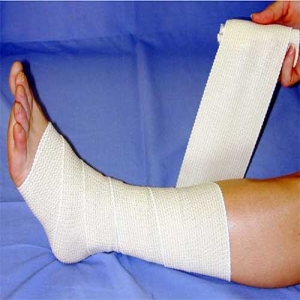Treating Minor Sports Injuries. By Our October Student Pharmacist, Tracey Dowdell.
The weather is cooling down and the leaves are starting to change. Fall is finally here! I don’t know about you, but fall is my favorite time of the year. Some of my favorite things about fall are: the crisp air, the beautiful and colorful scenery, and fall sports (especially football).
With sports, however, there are always injuries. The best way to treat an injury is by preventing the injury from happening in the first place! This can be done with properly fitted equipment and braces, good technique, and performing an adequate warm up.
In high school, I was enrolled in a two year athletic training course and I became very familiar with the various types of injuries that can happen in high school sporting events.
In this blog post, I will discuss how to treat some of the minor athletic injuries that can happen to your child.
First and foremost, if you think your child might need to see a doctor after an injury, don’t second guess yourself. Take your child to the doctor as soon as possible.
After an acute (sudden) sports injury, you should always remember “RICE” (Rest, Ice, Compression, Elevation):
Rest:
- Rest is important after an injury so that your child doesn’t aggravate or reinjure his/her injury.
Ice:
- Icing a swollen injury is one of the best things you can do.
- Icing decreases inflammation (swelling) and numbs the painful area.
- As we age, we tend to apply heat to our aching joints. But if you were to apply heat to a swollen sports injury, you could potentially make it worse.
- The best rule of thumb for icing an injury is 20 minutes ON and 45 minutes OFF. This means that you should only apply the ice for 20 minutes. Then take it off for 45 minutes. Then repeat.
Various Ways to Ice:
1. Ice Cup:
This is one of my favorite icing techniques. To make an ice cup you fill a paper Dixie cup with water and freeze it. Then you peel off some of the rim of the cup and rub it in circular motions on the skin. By constantly moving the ice in a circle you are preventing the skin from getting frost bite.
2. Ice Pack:
This is the simplest method of icing. All that you have to do is place a bag of ice (or a frozen bag of corn or peas) on the injury. It is important that you put either a towel or clothing between your skin and the ice pack to prevent frostbite.
3. Ice Bath:
This method involves submerging the injured area in a bucket of ice water. I would only recommend using this method for ankle or hand injuries since they are a little harder to apply ice to. All that is involved in this method is filling a bucket with water and ice and placing your injured ankle or hand in the cold slush for 15-20 minutes.
Compression:
- Compression helps sports injuries by pushing the swelling out of the injured area and increasing blood circulation for improved healing.
- All you need is an ACE wrap, nothing fancy.
- To compress an injury properly you need to wrap the area starting at a point furthest away from the trunk of your body. You then end at the point closest to the trunk of your body overlapping the ACE bandage as you go up.
- Be careful not to wrap the area too tightly and cut off circulation.
- Never go to bed with a compression wrap on.
- If you are trying to wrap a shoulder or hip, ask your child’s athletic trainer or sports doctor to show you how to do it. Wrapping techniques for shoulders and hips are more involved than an ankle, hand, or knee and are difficult to explain in words without a demonstration.
Elevation:
- Elevation also helps to decrease swelling. When elevating an injured area you should have it elevated above the level of your heart.
Over the counter ibuprofen (Advil™/Motrin™) or acetaminophen (Tylenol™) can be used to help control pain. Ibuprofen will also help with swelling, but acetaminophen will not affect swelling.
REMEMBER TO ASK YOUR PHARMACIST IF IT IS ALRIGHT FOR YOU TO TAKE ANY OVER-THE-COUNTER MEDICATIONS. ALWAYS ASK IF YOU ARE UNSURE OF HOW MUCH TO TAKE AND HOW OFTEN YOU SHOULD TAKE A MEDICATION.
If after using the RICE method for two days, there is still swelling in the injured area, you should make an appointment to see a doctor.
If you have any questions, please call me or feel free to stop in the store any time to talk!




